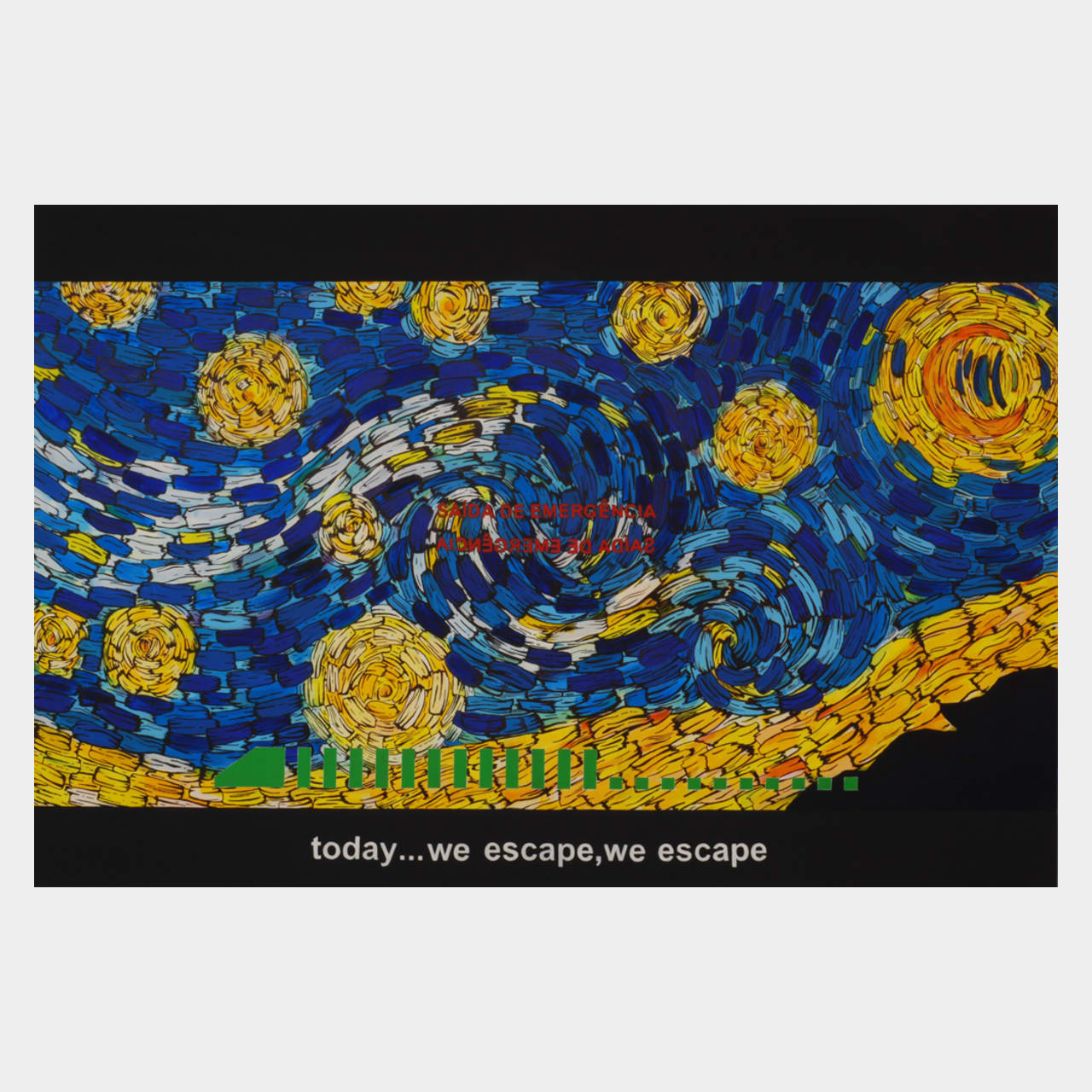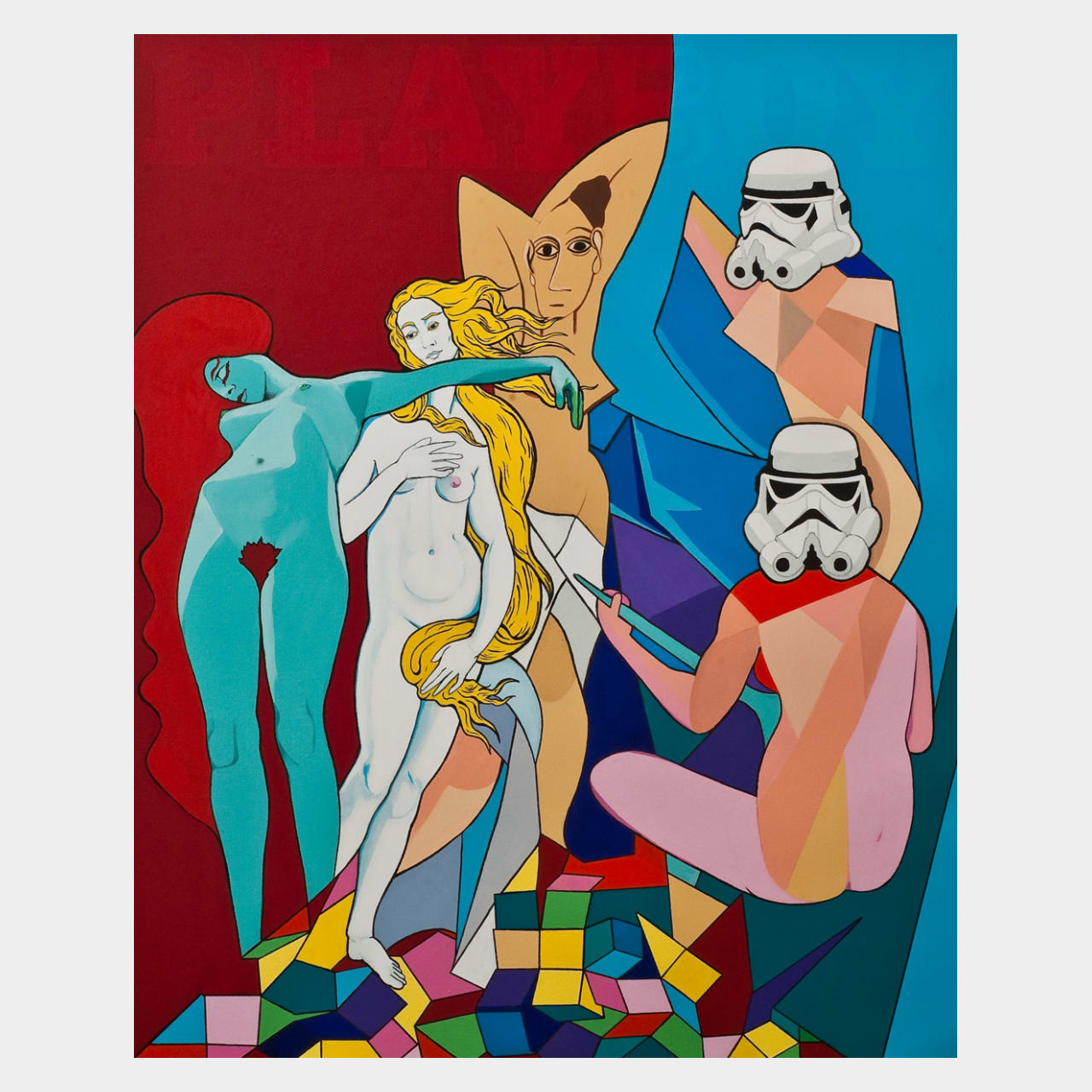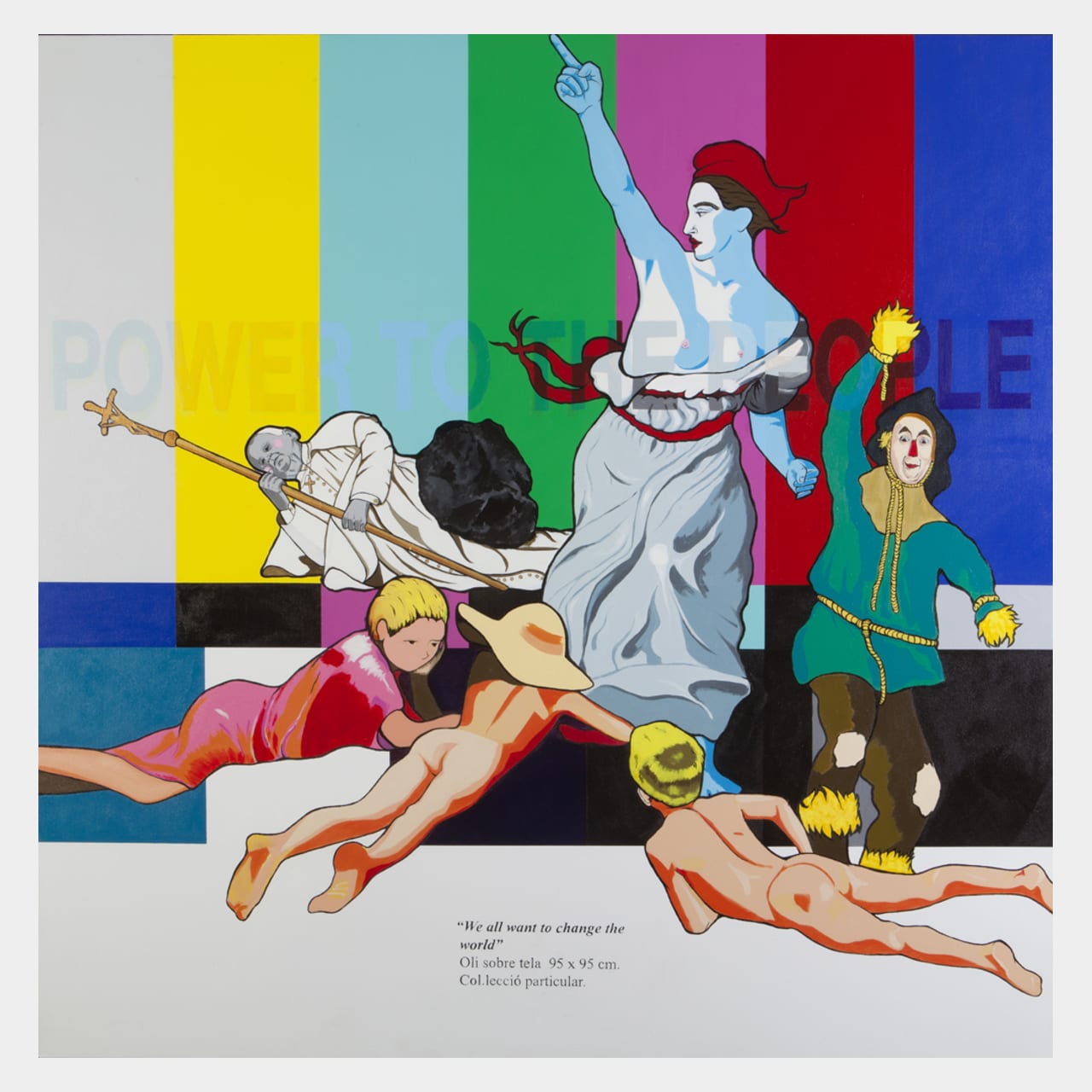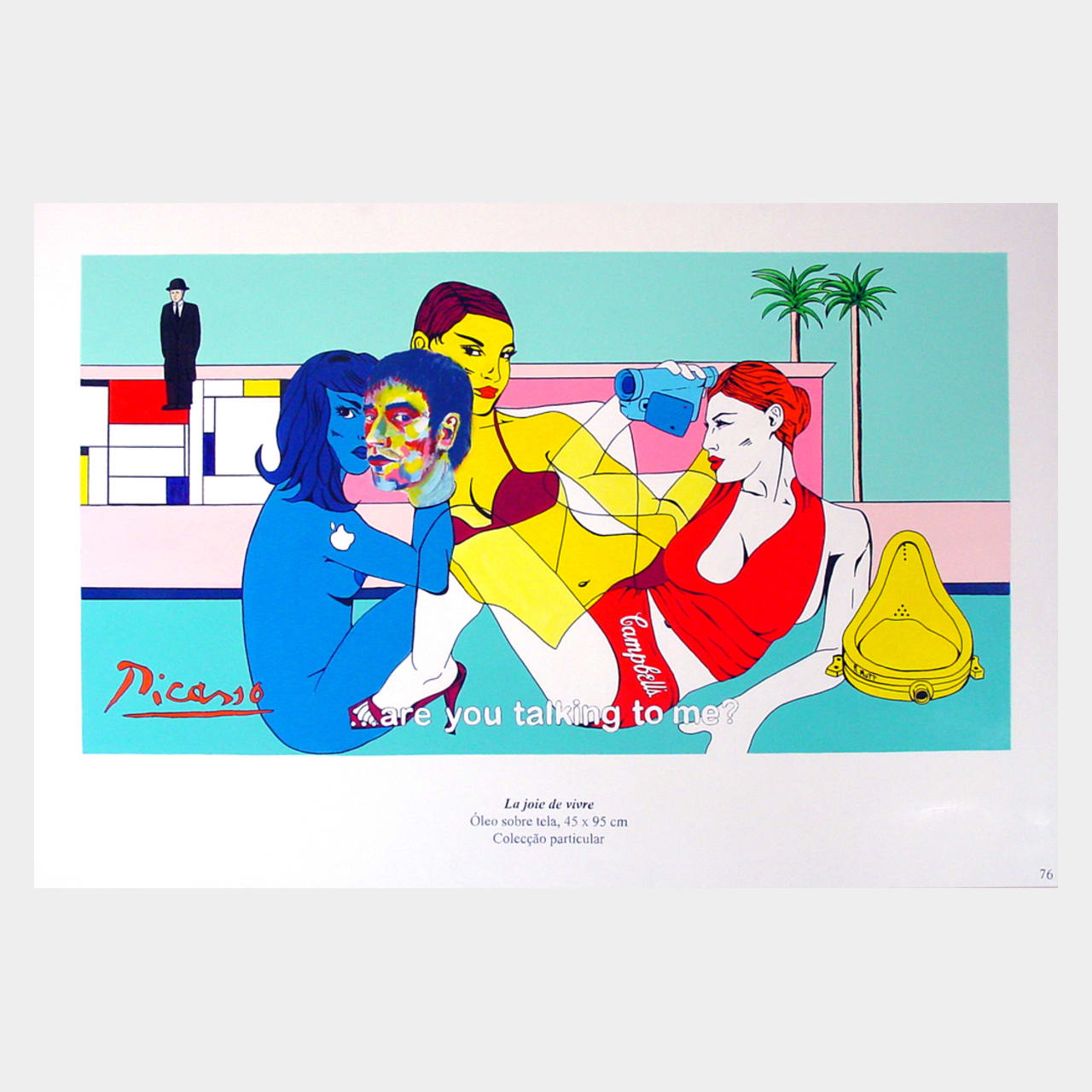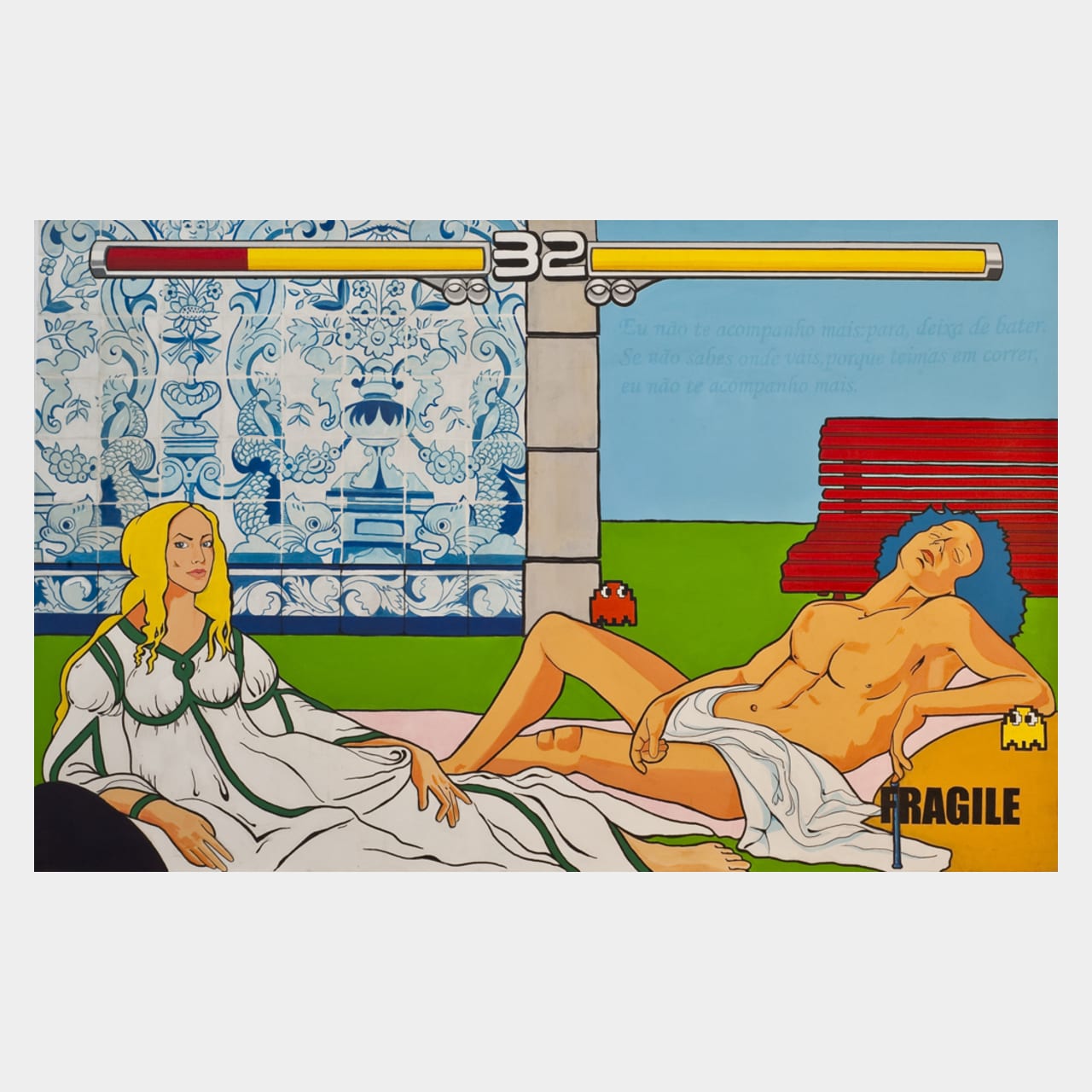Imaginary Museum
Painting is a practice which corresponds to a personal search for a visual image which may create a dialogue with the viewer. Basic, technical foundations exist such as composition, balance, rhythm, form and colour, in order to realize the painting.
Nevertheless painting remains, first and foremost, an expression of ideas thoughts and feelings. In Alexandre’s project, this medium continues to be a conductivity held within the work - a kind of multi-layering of technique and content.
In a capitalist society where the consumption of products and images is so determining, Alexandre appropriates from a language of images taken from the media and the 21st century, so characterized by the Pop Art movement. In the creative process there exists an intentionality to use fragments from art history or popular language. They are separated from their context and are related to other universes. They play up aspects of the banal or kitsch from cultural elements through the use of irony. These certain characteristics make the paintings somehow fragments belonging to various aspects of history. In the way they opt to portray or represent a diversity of subjects they are akin to a kind of multi-faceted cubist language.
We live in a time where technology forms part of our daily routine and indebted to this speed of information, notions of time and space are constantly accelerated. Alexandre’s paintings are strongly related to this temporal acceleration which is itself implicitly associated to the way in which he appropriates different imagery, transforms it or contextualizes it in time zones which seem to make no sense. This contradiction is assumed and reafirmed through the attitude of a painter whose work uses classical supports, canvas and acrylic, as his point of departure, but also portrays different elements as if they existed in a location free of temporal restriction.
Information society or contra-information society can be seen as metaphors for Alexandre’s paintings, while the internet exists as a battle held where overlaying history seems not to intimidate with its ordered cataloguing and ideological restrictions.


